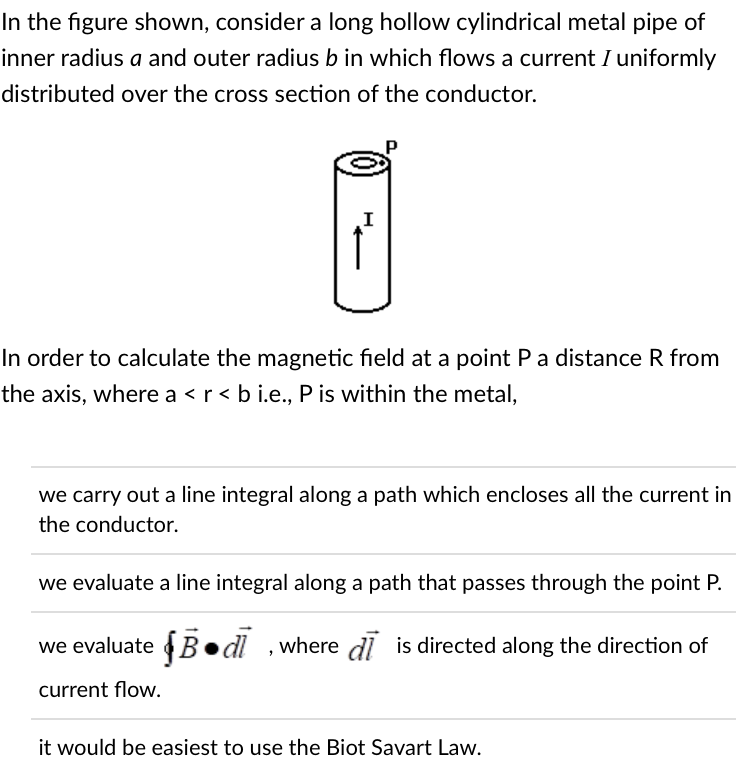In the figure shown, consider a long hollow cylindrical metal pipe of inner radius a and outer radius b in which flows a current I uniformly distributed over the cross section of the conductor. I In order to calculate the magnetic field at a point P a distance R from the axis, where a < r < b i.e., P is within the metal, we carry out a line integral along a path which encloses all the current im the conductor. we evaluate a line integral along a path that passes through the point P. we evaluate Bd, where di is directed along the direction of current flow. it would be easiest to use the Biot Savart Law.
In the figure shown, consider a long hollow cylindrical metal pipe of inner radius a and outer radius b in which flows a current I uniformly distributed over the cross section of the conductor. I In order to calculate the magnetic field at a point P a distance R from the axis, where a < r < b i.e., P is within the metal, we carry out a line integral along a path which encloses all the current im the conductor. we evaluate a line integral along a path that passes through the point P. we evaluate Bd, where di is directed along the direction of current flow. it would be easiest to use the Biot Savart Law.
Related questions
Question

Transcribed Image Text:In the figure shown, consider a long hollow cylindrical metal pipe of
inner radius a and outer radius b in which flows a current I uniformly
distributed over the cross section of the conductor.
F
I
In order to calculate the magnetic field at a point P a distance R from
the axis, where a < r < b i.e., P is within the metal,
we carry out a line integral along a path which encloses all the current in
the conductor.
we evaluate a line integral along a path that passes through the point P.
we evaluate Bod, where di is directed along the direction of
current flow.
it would be easiest to use the Biot Savart Law.
Expert Solution
This question has been solved!
Explore an expertly crafted, step-by-step solution for a thorough understanding of key concepts.
Step by step
Solved in 2 steps
